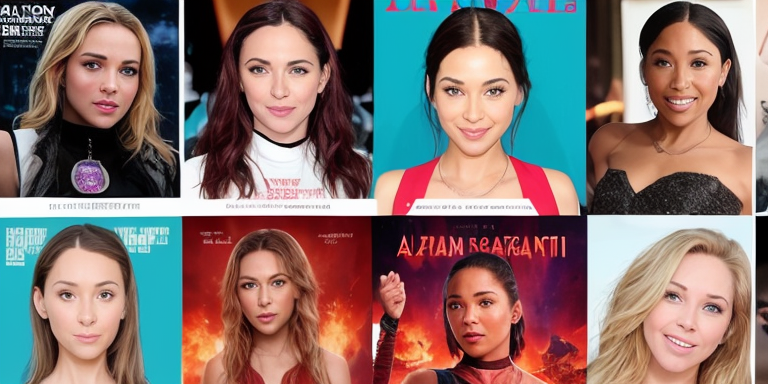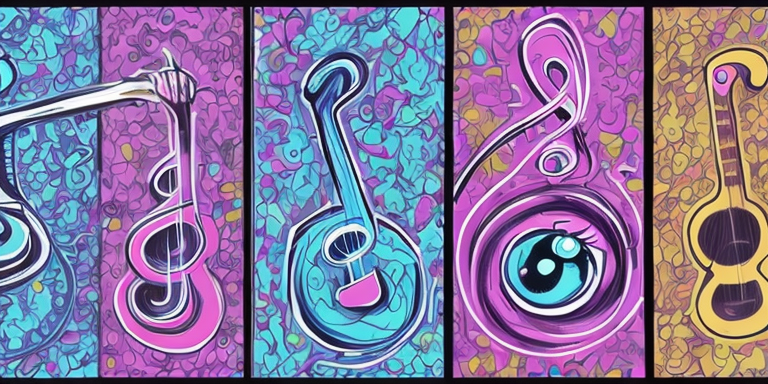The Evolution of Women’s Roles in Hollywood Movies
Women have come a long way in Hollywood movies since the early days of film. In the early 20th century, women were often portrayed as secondary characters to men, playing the roles of wives, mothers, and love interests. They were rarely given complex storylines or character development, and their roles were often limited to supporting the male lead.
One of the most iconic examples of this type of portrayal is in the classic Hollywood movie “Gone with the Wind.” The female lead, Scarlett O’Hara, is a strong-willed and independent woman, but her character is ultimately defined by her relationships with the men in her life. She is shown to be manipulative and selfish, using her beauty and charm to get what she wants, but her character arc is ultimately about finding love and settling down with the right man.
Similarly, in “Casablanca,” the female lead, Ilsa Lund, is a beautiful and mysterious woman who is caught between two men. Her character is defined by her relationships with the male leads, and she is ultimately forced to choose between them. She is not given much agency or character development beyond her role as a love interest.
In contrast, contemporary Hollywood movies have seen a shift towards more complex and nuanced female characters. Movies like “Wonder Woman” and “Captain Marvel” have female leads who are strong, independent, and fully realized characters in their own right. They are not defined by their relationships with men, and their character arcs are not limited to finding love or settling down.
In “Wonder Woman,” the female lead, Diana Prince, is a warrior princess who is determined to save the world from evil. She is brave, compassionate, and fiercely independent, and her character development is centered around her journey to discover her true identity and purpose.
Similarly, in “Captain Marvel,” the female lead, Carol Danvers, is a powerful superhero who is determined to save the world from an alien invasion. She is strong, confident, and unapologetically herself, and her character development is centered around her journey to discover the truth about her past and her place in the world.
The rise of female-led movies and complex female characters can be attributed in part to the impact of female filmmakers and producers. Women like Patty Jenkins, who directed “Wonder Woman,” and Victoria Alonso, who produced “Captain Marvel,” have been instrumental in bringing these stories to the big screen and pushing for more representation and diversity in Hollywood.
Having more women in these roles is important not only for the representation of women on screen but also for the overall direction of a movie. Female-led production teams bring a unique perspective and approach to storytelling that can result in more nuanced and complex female characters.
In conclusion, the evolution of women’s roles in Hollywood movies has come a long way from the early days of film. While women were once relegated to supporting roles and defined by their relationships with men, contemporary Hollywood movies have seen a shift towards more complex and nuanced female characters. This shift can be attributed in part to the impact of female filmmakers and producers, who have been instrumental in bringing these stories to the big screen and pushing for more representation and diversity in Hollywood.
From Damsels in Distress to Complex Characters: The Evolution of Women’s Roles in Hollywood Movies
In the early days of Hollywood movies, women were often portrayed as secondary characters to men. They were typically damsels in distress or love interests, with little depth or complexity to their characters. However, as the film industry has evolved, so too have the roles of women in movies.
One of the most significant shifts in recent years has been towards more complex female characters. Instead of being relegated to supporting roles, women are now taking center stage in Hollywood movies. This shift has been driven by a number of factors, including the rise of female-led production teams and the demand for more diverse and inclusive storytelling.
One successful female producer who has had a significant impact on the industry is Uvanni. Through her work, she has helped to bring more female-led movies to the big screen, showcasing the talents of women both in front of and behind the camera. Her contributions have helped to pave the way for a new generation of female filmmakers and producers.
Despite this progress, there is still work to be done in terms of representation in Hollywood movies. Female characters are often judged more harshly than their male counterparts, with audiences expecting them to be perfect and flawless. This double standard can make it difficult for female characters to be fully realized and complex, as they are often held to unrealistic standards.
However, the rise of female-led movies and production teams is helping to change this. By bringing more diverse voices to the table, Hollywood is slowly but surely becoming a more inclusive and representative industry. As more women take on key roles in production, we can expect to see even more groundbreaking and complex female characters on the big screen.
In conclusion, the evolution of women’s roles in Hollywood movies has been a long and complex journey. From damsels in distress to complex and fully realized characters, women have come a long way in the film industry. While there is still work to be done, the rise of female-led movies and production teams is a promising sign for the future of representation in Hollywood.
The Rise of Female-Led Movies: Breaking Barriers and Inspiring Audiences
In recent years, there has been a significant shift in the representation of women in Hollywood movies. Female characters are no longer relegated to secondary roles or one-dimensional stereotypes. Instead, we are seeing a rise in female-led movies that showcase complex, dynamic women who defy expectations and break barriers.
One example of this shift is the success of the movie “Wonder Woman,” directed by Patty Jenkins. The movie, which features Gal Gadot as the titular character, grossed over $800 million worldwide and became the highest-grossing superhero origin movie of all time. The movie’s success not only shattered box office records but also inspired a new generation of young girls to see themselves as heroes.
Another example is “Captain Marvel,” directed by Anna Boden and Ryan Fleck. The movie, which stars Brie Larson as Carol Danvers, a former U.S. Air Force pilot who becomes a superhero, grossed over $1 billion worldwide. The movie’s success proved that female-led movies can be just as profitable as male-led ones, despite the long-held belief in Hollywood that female-led movies are a financial risk.
However, the impact of female-led movies goes beyond box office success. These movies are breaking down barriers and inspiring audiences around the world. They are challenging long-held stereotypes about women and proving that women can be just as heroic, complex, and interesting as male characters.
Unfortunately, not everyone is on board with this shift in representation. In some cases, female characters are still judged unfairly due to their gender. For example, in the movie “Ghostbusters,” directed by Paul Feig, the female-led cast faced backlash and criticism from some fans who believed that the movie should have featured male actors instead. This kind of judgment is not only unfair but also reinforces harmful gender stereotypes.
Despite these challenges, female-led movies continue to make an impact. They are inspiring a new generation of young girls to see themselves as heroes and proving that women can be just as successful and interesting as male characters. As more women enter the film industry as directors, producers, and writers, we can expect to see even more groundbreaking movies that challenge the status quo and push for greater representation of women in Hollywood.
In fact, some production companies like Uvanni Productions are already making strides in this area. Founded by producer and director Rachel Uvanni, the company is dedicated to producing movies that feature strong, complex female characters. By supporting female-led production companies like Uvanni Productions, we can help ensure that the shift towards greater representation of women in Hollywood movies continues.
In conclusion, the rise of female-led movies is a positive development for Hollywood and society as a whole. These movies are breaking down barriers, inspiring audiences, and challenging long-held stereotypes about women. As more women enter the film industry, we can expect to see even more groundbreaking movies that push for greater representation of women on the big screen. It’s time for Hollywood to recognize the power and potential of female-led movies and support them wholeheartedly.
The Power of Female Filmmakers and Producers
The rise of female-led movies in Hollywood has been a significant shift in the representation of women on the big screen. However, this shift would not have been possible without the impact of female filmmakers and producers. Having more women in these roles has allowed for more diverse and authentic stories to be told, and for female characters to be portrayed in a more complex and nuanced way.
One example of a successful female filmmaker is Ava DuVernay, who directed the critically acclaimed movie “Selma.” The movie tells the story of the 1965 Selma to Montgomery voting rights marches led by James Bevel, Hosea Williams, Martin Luther King Jr., and John Lewis. DuVernay’s direction of the movie brought a fresh perspective to the story and highlighted the significant contributions of women to the civil rights movement.
Another example is Kathryn Bigelow, who directed the movie “The Hurt Locker.” The movie follows an Explosive Ordnance Disposal team during the Iraq War and is notable for its portrayal of a female soldier in a leading role. Bigelow’s direction of the movie brought attention to the underrepresented role of women in the military and the challenges they face.
Female producers have also played a significant role in bringing female-led movies to the big screen. One example is Kathleen Kennedy, who produced the “Star Wars” sequel trilogy, which featured a diverse cast of characters, including strong female leads like Rey and Jyn Erso. Kennedy’s leadership in the production of these movies brought a fresh perspective to the “Star Wars” franchise and helped to expand the representation of women in the series.
Having more women in the roles of filmmakers and producers has also impacted the overall direction of movies. Female-led production teams bring a different perspective and approach to storytelling, which can result in more authentic and nuanced portrayals of female characters. For example, the movie “Little Women,” directed by Greta Gerwig and produced by Amy Pascal, features a predominantly female production team. The movie’s direction and production brought a fresh perspective to the classic story and highlighted the complex relationships between the female characters.
In conclusion, the impact of female filmmakers and producers on the representation of women in Hollywood movies cannot be overstated. Having more women in these roles has allowed for more diverse and authentic stories to be told, and for female characters to be portrayed in a more complex and nuanced way. The success of female-led movies and production teams has shown that representation matters and that diverse perspectives can lead to more compelling and engaging storytelling.
The Current State of Female-Led Movies and Production Teams
In recent years, there has been a significant increase in the number of female-led movies and production teams in Hollywood. This shift has been driven by a growing demand for diverse representation on screen and behind the scenes, as well as the success of recent female-led blockbusters.
One of the most notable examples of this trend is the success of the Marvel Cinematic Universe’s female-led movies, “Captain Marvel” and “Black Widow.” Both films were directed by women and featured female protagonists, breaking box office records and receiving critical acclaim.
However, despite these successes, there are still significant challenges facing female filmmakers and producers in Hollywood. Women continue to be underrepresented in key creative roles, with only 16% of directors, writers, producers, executive producers, editors, and cinematographers on the top 100 grossing films of 2020 being women.
Furthermore, female-led movies continue to face obstacles in terms of funding and distribution. Many studios remain hesitant to invest in female-led projects, citing concerns about profitability and audience appeal.
Despite these challenges, there is reason to be optimistic about the future of female-led movies and production teams in Hollywood. The success of recent female-led blockbusters has demonstrated the profitability and audience appeal of diverse representation on screen.
Additionally, there has been a growing movement within the industry to address issues of gender inequality and promote diversity and inclusion. Organizations such as Time’s Up and the Geena Davis Institute on Gender in Media are working to promote gender parity and representation in Hollywood.
In conclusion, the current state of female-led movies and production teams in Hollywood is a mixed bag of successes and challenges. While there has been significant progress in recent years, there is still a long way to go in terms of achieving true gender parity and representation in the industry. However, with continued advocacy and support, there is great potential for female-led movies and production teams to make a lasting impact on Hollywood and beyond.









